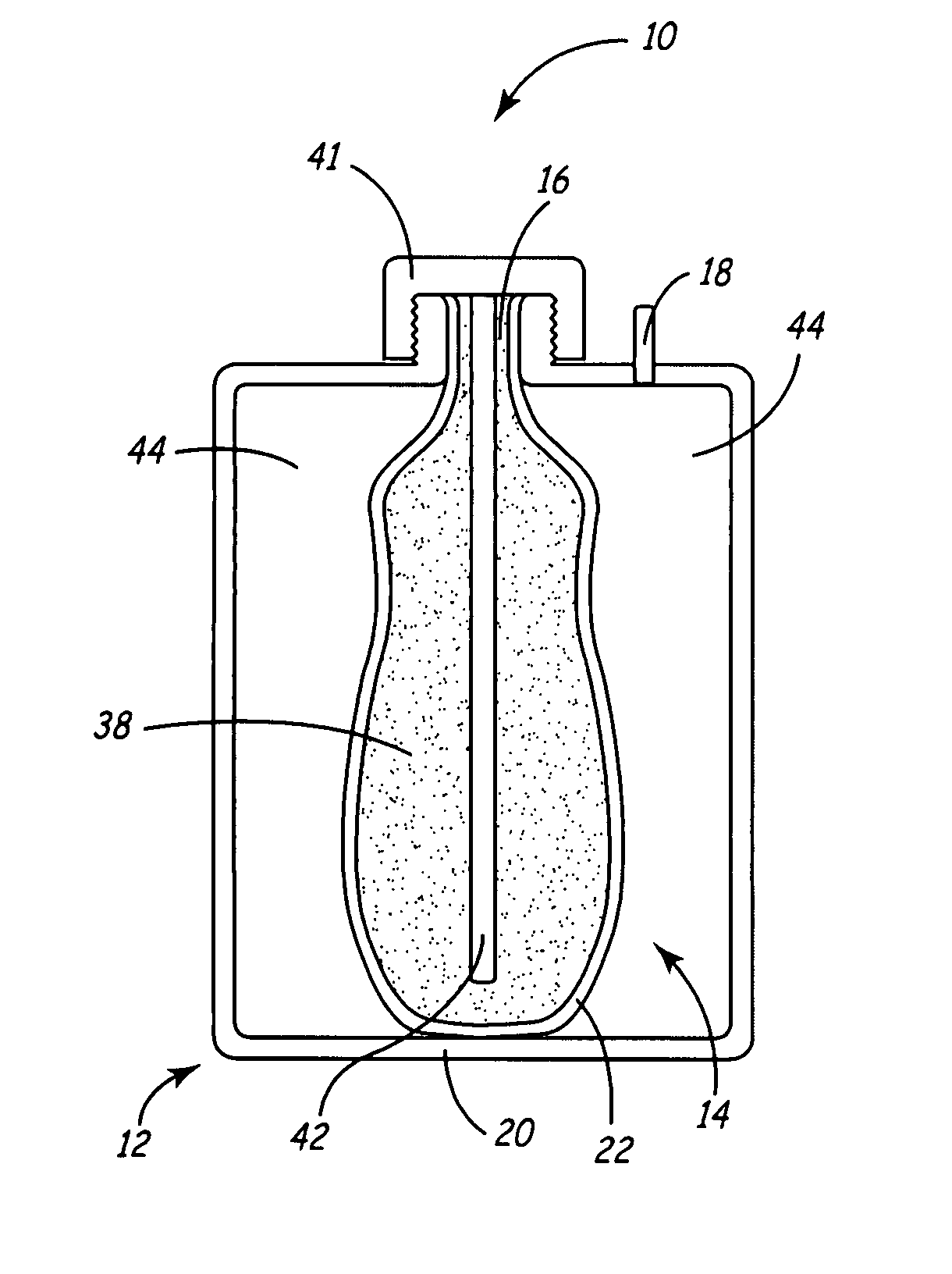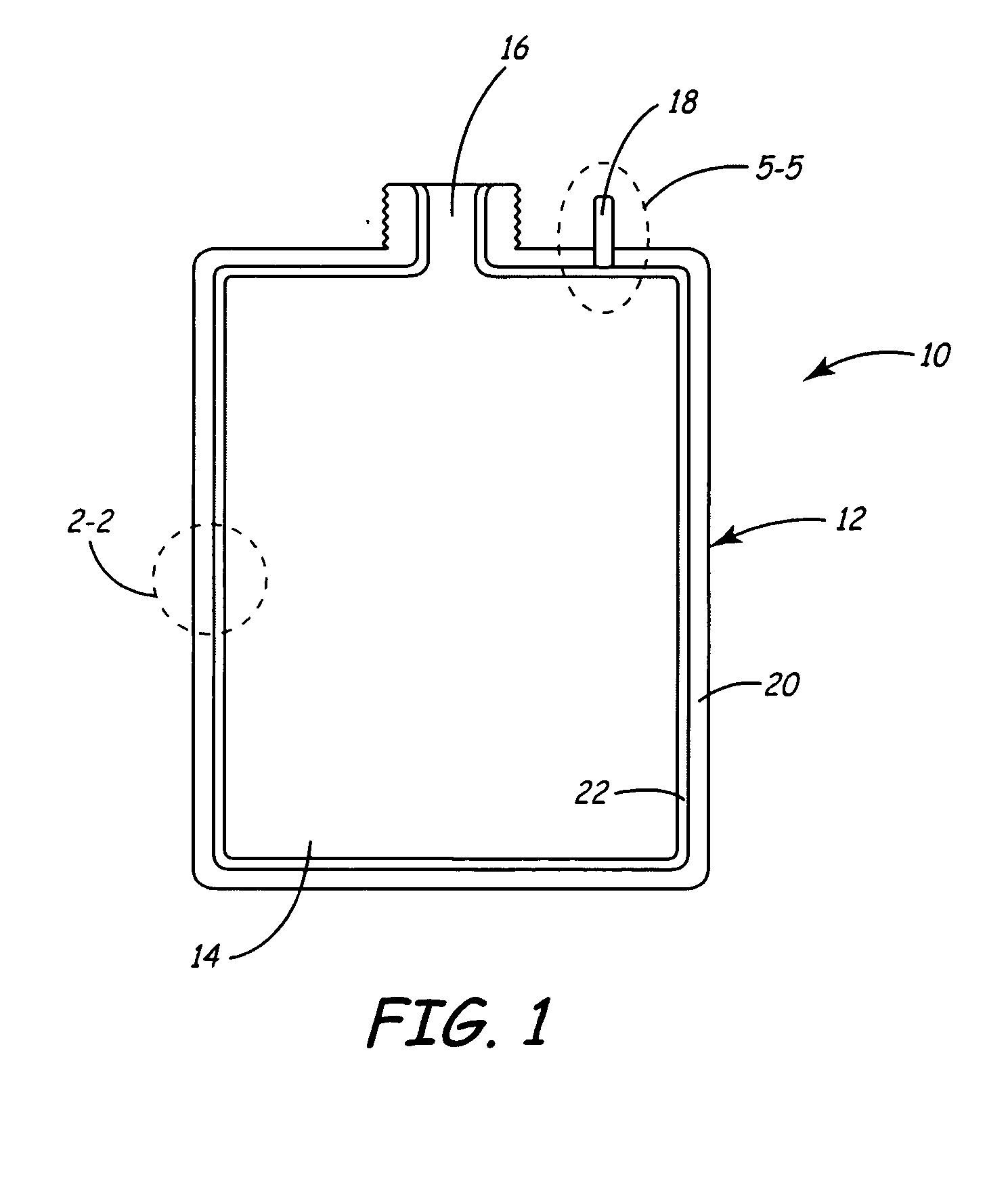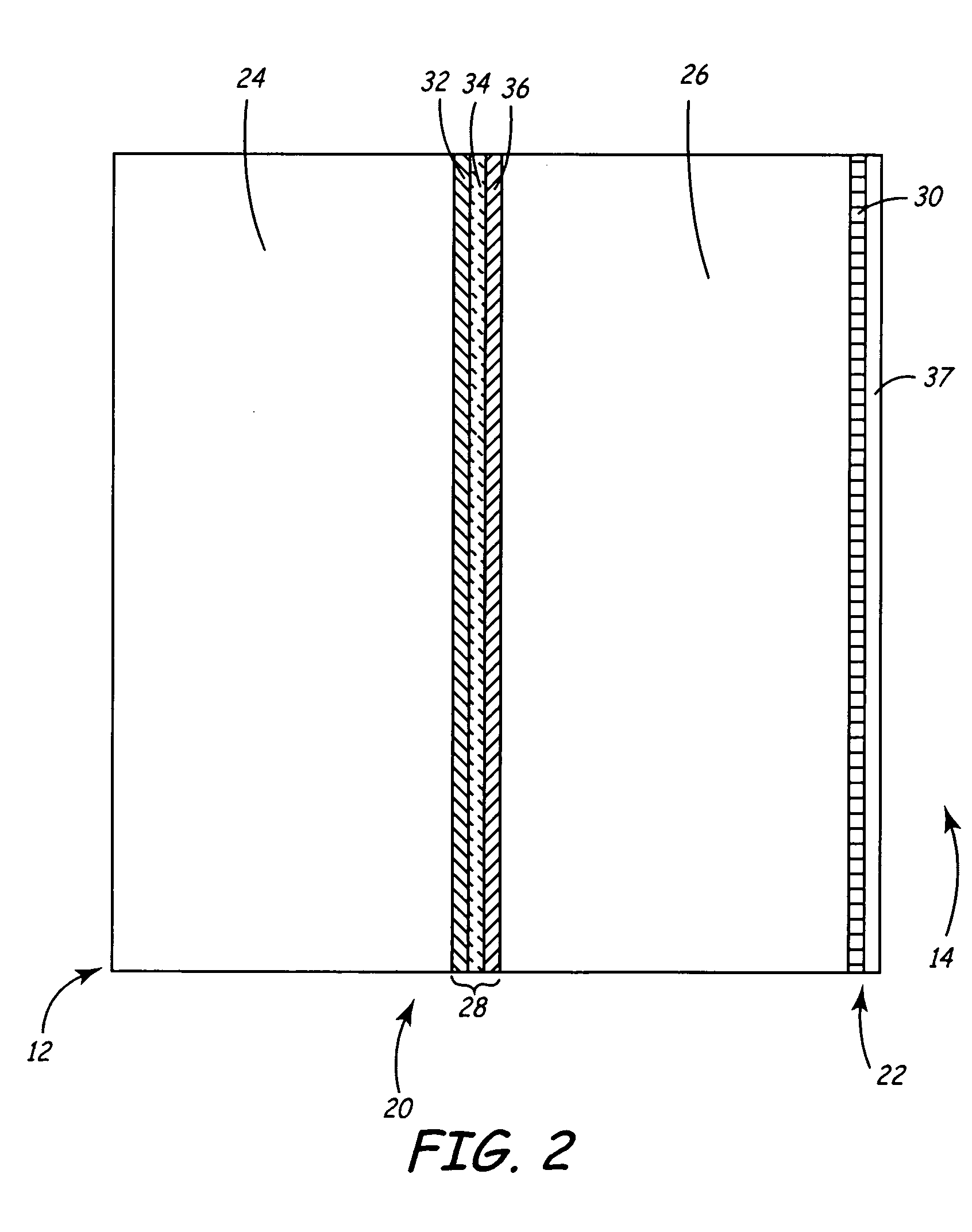Blown bottle with intrinsic liner
a bottle and liner technology, applied in the field of system for holding and dispensing liquids, can solve the problems of product failure, reduced reliability, unwanted particle generation in liquids, etc., and achieve the effect of diffusing the bond strength
- Summary
- Abstract
- Description
- Claims
- Application Information
AI Technical Summary
Benefits of technology
Problems solved by technology
Method used
Image
Examples
second embodiment
[0036] Liner portion 22 includes high-purity layer 37 (and tie layer 30 in the second embodiment). High-purity layer 37 is preferably a high-purity, high density polyethylene, and is the portion of bottle wall 12 that is exposed to cavity 14. High-purity layer 37 may alternatively consist of a high-purity, medium density polyethylene. Both polymers allow high-purity layer 37 to remain flexible enough to collapse within cavity 14. A high purity polymer is necessary for preventing contamination of ultrapure liquids retained in cavity 14.
[0037] As previously discussed, liner portion 22 is intrinsically formed with rigid portion 20 and tie layer 30 through the blow-molding process. This adds the benefit of preventing interstitial air from existing adjacent to liner portion 22. Typically, with collapsible-liner containers, interstitial air resides between the liner and the outer rigid wall. This presents a potential problem of the air permeating into the contained liquid over time, conta...
first embodiment
[0054] Additionally, in the first embodiment, gas inlet 18 is molded such that internal end 48 is positioned at a point between tie layer 30 and high-purity layer 37. This allows gas from the pressurized gas line (not shown) to flow between tie layer 30 and high-purity layer 37. Referring to FIG. 6, gas flows from the pressurized gas line (not shown) into external end 46 of gas inlet 18, designated by arrow A, and out through internal end 48, designated by arrow B. Because internal end 48 is positioned between tie layer 30 and high-purity layer 37, pressure increases between these layers, forcing high-purity layer 37 to peel away from tie layer 30, as designated by arrows C, D, and E, and collapse within cavity 14. The collapsing of high-purity layer 37 then pressure dispenses liquid 38 from cavity 14.
[0055] Accordingly, the first embodiment of the present invention combines the use of an adhesive contact having a weaker adhesive bond strength between rigid portion 20 and liner port...
PUM
| Property | Measurement | Unit |
|---|---|---|
| inner diameter | aaaaa | aaaaa |
| thickness | aaaaa | aaaaa |
| thickness | aaaaa | aaaaa |
Abstract
Description
Claims
Application Information
 Login to View More
Login to View More - R&D
- Intellectual Property
- Life Sciences
- Materials
- Tech Scout
- Unparalleled Data Quality
- Higher Quality Content
- 60% Fewer Hallucinations
Browse by: Latest US Patents, China's latest patents, Technical Efficacy Thesaurus, Application Domain, Technology Topic, Popular Technical Reports.
© 2025 PatSnap. All rights reserved.Legal|Privacy policy|Modern Slavery Act Transparency Statement|Sitemap|About US| Contact US: help@patsnap.com



